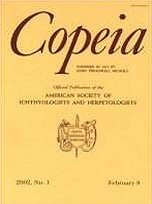The Bluemask Darter, Etheostoma (Doration) sp., is an endangered fish endemic to the upper Caney Fork system in the Cumberland River drainage in central Tennessee. Little is known about the life history of this species, and an understanding of its reproductive ecology is necessary to implement management and recovery actions. Spawning behavior and habitat were studied from 29 May to 1 July 2002 in the Collins River. Spawning events (n = 247) averaged 7.6 ± 0.1 sec, and intervals between spawning events averaged 127.0 ± 5.0 sec. Some age 1 individuals were sexually mature, but the majority of the reproductive population was comprised of older fish. Microhabitat use differed among nonspawning females, nonspawning males, and spawning pairs. Depths and water velocities differed significantly (P < 0.05) between areas occupied by lone females (n = 37), lone males (n = 45), and spawning pairs (n = 63). Spawning transpired in runs at mean water depths of 21.4 ± 0.4 cm, bottom velocities of 18.9 ± 0.4 cm/sec, and water column velocities of 28.9 ± 0.5 cm/sec. Substrate was dominated by gravel in areas occupied by lone males and spawning pairs, whereas most lone females were found over a sand- dominant substrate. Spawning microhabitats differed from habitats used during the summer.
How to translate text using browser tools
1 May 2004
Spawning Behavior and Habitat of the Endangered Bluemask Darter, Etheostoma (Doration) sp
Jeffrey W. Simmons,
James B. Layzer
ACCESS THE FULL ARTICLE





